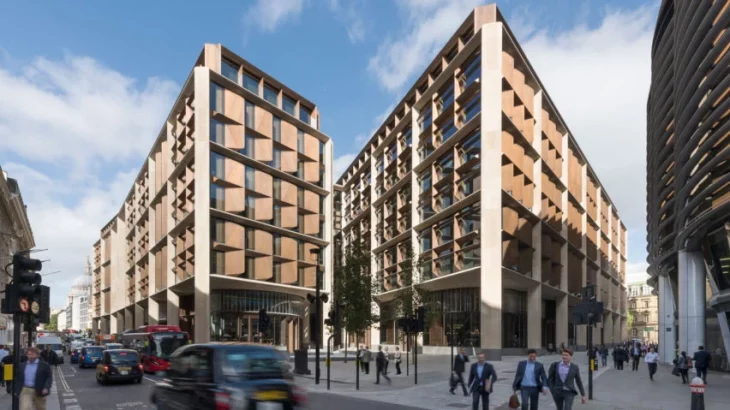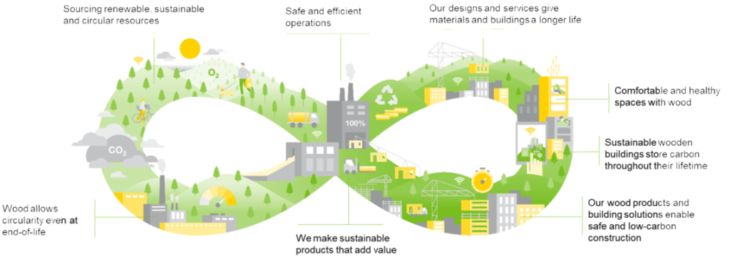
Bloomberg Building. Image sourced from Foster + Partners
Following the creation of the Paris Agreement in 2015, it is essential the construction industry recognizes the necessity of including more sustainable design processes. The agreement aims to cap the global temperature rising at 1.5°C in order to significantly reduce the harmful impacts of climate change. The construction industry is currently responsible for 39% of global emissions, with operation emissions accounting for 28%. The remaining 11% is produced from embodied carbon emissions that are related to a material’s life cycle; from extraction and use to end-of-life processes. Thus, it is imperative action is taken in the industry to ensure the terms of the Paris Agreement are fulfilled.
Concrete and steel have long been pillars of the construction industry, and are routinely used in engineering and construction materials. These materials, however, have been identified as being among the three biggest producers of carbon. Thus, the construction industry must shift in a new direction, toward the use of more sustainable and environmentally-friendly options, particularly mass timber design. The benefits of a mass timber design approach are well-documented, however, the extent of this research is limited. The majority of literature on this topic has focused on the environmental impact of timber solely during its construction and use and has not recognized the environmental impact of other factors including manufacturing, transportation to site, and end-of-life processes. In order to establish the true impact of alternative materials for construction, it is essential to consider all of these factors. A life cycle analysis can be used as a method to quantify a material’s impact on the environment – ranging from its extraction from source, transportation to site, its use in a project up until its end-of-life processes. By incorporating a life cycle analysis approach into with design and construction processes of a project, a more optimal design concept that minimizes damage to the surrounding environment in a timely and cost-efficient manner may be achieved. Currently, architecture firms utilize software’s such as BREEAM and LEED to certify a building’s impact on the environment. However, these programs are not fit for purpose.
This paper proposes the approach of integrating life cycle analysis software and its conceptual framework into the design and procurement processes of a mass timber structure to allow both architects and designers to make more informed decisions on the materials chosen for a given project and their environmental impacts.

Wood Life Cycle – Image sourced Stora Enso
#Mass Timber design, #Life cycle analysis, #Sustainability, #Climate change #Environmental impact, #conceptual framework
Designing for sustainability in Mass Timber design through a Life Cycle Analysis conceptual framework is a project of IAAC, Institute for Advanced Architecture of Catalonia developed at Master in Mass Timber Design in 2021/2022 by student: Jack Byrne and faculty: Daniel Ibanez. Course: MMTD01 – Narratives